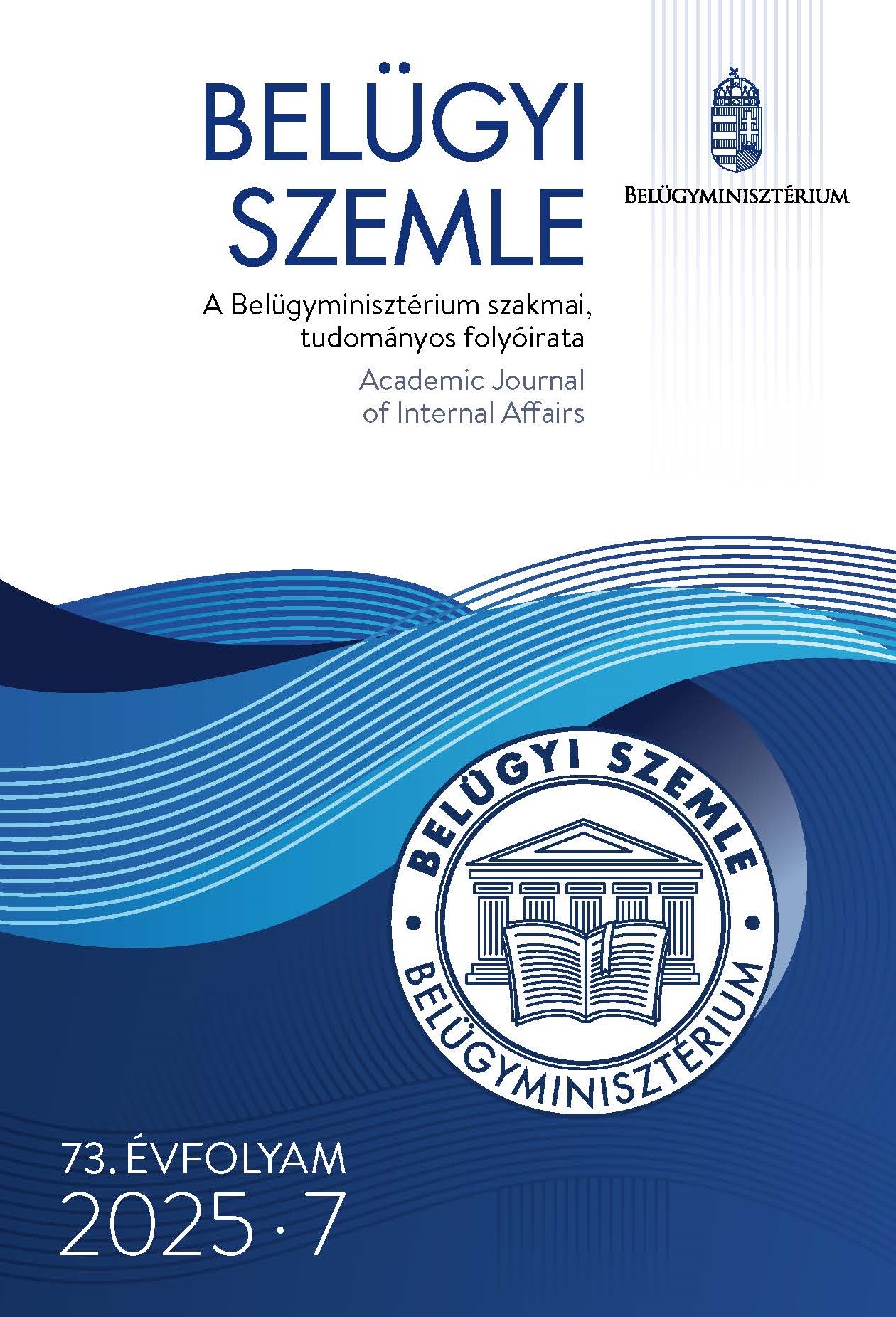Abstract
Aim: This study aims to explore and summarise nearly a decade of the operations of the second-generation Schengen evaluations, along with the direct experiences related to its implementation.
Methodology: Professional, semi-structured interviews, document analysis, and content analysis.
Findings: The comprehensive Commission report published in 2020 was of strategic importance in analysing the first five-year programme of the Schengen evaluation system, examining the operational efficiency and coherence of the Schengen area. Significant hindering factors emerged during the implementation of the previous evaluation system, such as the slow administrative processes, the burden on member states, and the lack of expert preparedness. The original objectives of the evaluation mechanism, such as dynamism and speed, were not fully achieved, which was further hampered by the slow administrative processes of the Commission. The renewal of the Schengen mechanism became unavoidable from 2021.
Value: The study can contribute to the scientific understanding of the reasons and processes that justified the reform of the second-generation Schengen evaluations.
References
Balla, J., Vájlok, L., & Kui, L. (2019). Theory and practice of the Schengen Evaluation Mechanism. Magyar Rendészet, 19(1), 15–33. https://doi.org/10.32577/mr.2019.1.1
Bocquillon, P., & Dobbels, M. (2014). An elephant on the 13th floor of the Berlaymont? European Council and Commission relations in legislative agenda setting. Journal of European Public Policy, 21(1), 20–38. https://doi.org/10.1080/13501763.2013.834548
Borsa, Cs. (2020). Egy schengeni értékelés margójára [Remarks to a Schengen evaluation]. Belügyi Szemle, 68(9), 35–45. https://doi.org/10.38146/BSZ.2020.9.2
Éberhardt, G. (2018). A schengeni értékelési rendszer elmélete és gyakorlata: A Szegedi Határrendészeti Kirendeltség szerepe a szárazföldi határok viszonylatában történt bizottsági értékelésben [The theory and practice of the Schengen evaluation system: The role of the Szeged Border Police Directorate in the committee evaluation concerning land borders]. Határrendészeti Tanulmányok, 15(2), 46–63.
Guild, E., Carrera, S., Vosyliūtė, L., Groenendijk, K., Brouwer, E., Bigo, D., Jeandesboz, J., & Martin Mazé, M. (2016). Internal border controls in the Schengen area: Is Schengen crisis proof? Department C: Citizens’ Rights and Constitutional Affairs Report, European Parliament. Brussels.
Monar, J. (2014). Justice and Home Affairs. Journal of Common Market Studies, 52(S1), 141–156. https://doi.org/10.1111/jcms.12160
Pascouau, Y. (2012). The Schengen evaluation mechanism and the legal basis problem: Breaking the deadlock. European Policy Centre.
Soós, E., & Fejes, Z. (2008). Hungarian experiences of cross border cooperation. Fundamentum, 5, 123–157.
Ulrich, S., Nøkleberg, M., & Gundhus, H. O. I. (2020). Schengen evaluation: An educational experience—The example of Norway. Politihøgskolen. https://hdl.handle.net/11250/2650172
Wagner, M., Katsiaficas, C., Liebl, J., Hadj Abdou, L., Dražanová, L., & Jeandesboz, J. (2020). The state of play of Schengen governance: An assessment of the Schengen evaluation and monitoring mechanism in its first multiannual programme (Study, Policy Department for Citizens’ Rights and Constitutional Affairs, European Parliament).
Zsákai, L. (2022). A Schengen Fórum létrejötte és eredményei: uniós szakpolitikai lépések a schengeni térség megreformálására II [The establishment and outcomes of the Schengen Forum: EU policy steps to reform the Schengen area II]. Határrendészeti Tanulmányok, 19(1), 95–106.
Zsákai, L. (2023). A Renewed Schengen Evaluation Mechanism in the Light of the Schengen Reforms. Magyar Rendészet, 23(1), 89–100. https://doi.org/10.32577/mr.2023.1.5

This work is licensed under a Creative Commons Attribution-NonCommercial-NoDerivatives 4.0 International License.
Copyright (c) 2025 Academic Journal of Internal Affairs

